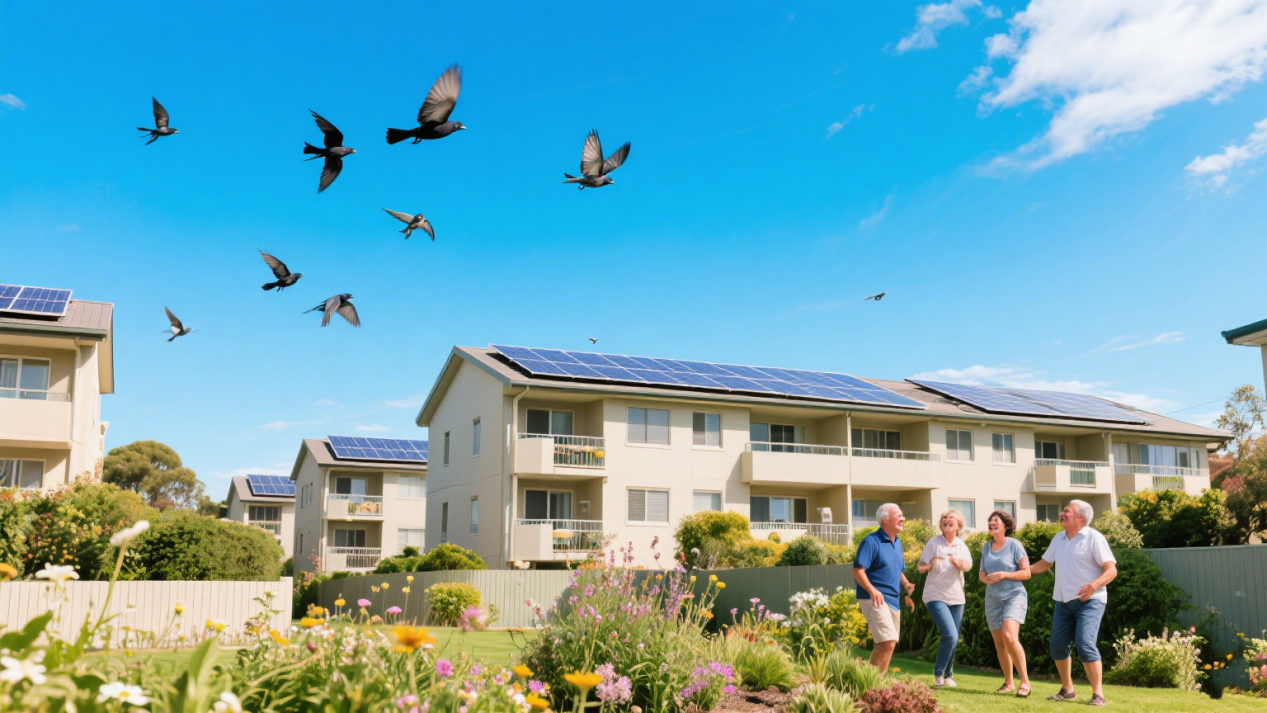
Inquiry
Bringing Solar Power to Apartment Living: Unlocking the Potential
Australia has long stood out as a leader in rooftop solar adoption, with nearly 30% of households now generating electricity from the sun. But despite this remarkable progress, millions of Australians living in apartments remain excluded from the benefits of clean energy.
This gap is significant. Around 2.5 million Australians live in apartments, yet fewer than 3% of these dwellings currently benefit from rooftop solar. While standalone homes enjoy lower power bills and reduced carbon emissions, apartment residents have been left on the sidelines.
But change is possible—and necessary.
According to researchers at the University of New South Wales, apartment rooftops across Australia have the potential to host up to 3.3 gigawatts (GW) of solar photovoltaic (PV) systems. That could bring renewable energy to the 16% of Australians living in strata-managed buildings.
Why Apartment Uptake Lags Behind
The pathway to solar adoption in multi-residential buildings is fraught with challenges. Unlike standalone houses, apartments typically involve shared ownership, requiring consensus among multiple stakeholders. Differences in opinion over installation, ongoing management, and asset ownership often lead to delays or inaction.
High upfront costs, technical complexity, and long-term maintenance concerns add further complications. Implementing distributed energy resources (DER)—including rooftop solar, battery storage, electric vehicle (EV) chargers, and electric hot water systems—often demands a level of expertise and investment that many strata committees are not equipped to handle.
These issues are especially pressing in high-rise apartments, where up to 60% of electricity usage is attributed to common services such as lifts, lighting, and HVAC systems. In some cases, a quarter of a building’s strata fees go directly to energy bills.
Although many building managers and residents are already convinced of the environmental value, the financial and logistical burdens remain significant deterrents.
Overcoming Barriers to Adoption
Fortunately, a variety of support mechanisms are now emerging to help apartment residents and strata communities embrace clean energy.
In Victoria, for example, the state government has introduced the Solar for Apartments pilot program, which is specifically designed to lower upfront costs and encourage solar uptake in multi-tenant dwellings. On a national level, the Federal Government’s Community Solar Banks initiative aims to provide similar benefits.
In parallel, the Clean Energy Finance Corporation (CEFC) has partnered with financial institutions to develop green loan products tailored for strata buildings. These financing options are structured to reduce the financial strain and make solar more accessible.
While many of these programs still require a degree of capital commitment from owners' corporations, they are essential steps toward bridging the solar equity gap between houses and apartments.
Future-Proofing Apartment Infrastructure
As Australia transitions toward a low-emissions future, clean energy technologies designed for apartment environments are becoming essential, not optional. These technologies include:
Rooftop Solar
Installing PV panels allows buildings to capture energy from sunlight, reducing dependence on grid electricity. Both shared facilities and individual units can benefit from reduced utility costs and lower emissions.
Battery Energy Storage
Batteries enable buildings to store surplus solar energy for use at night or during peak demand. This helps balance loads, provides backup during outages, and maximizes solar investment.
EV Charging Stations
As more Australians shift to electric vehicles, charging infrastructure in apartment complexes is no longer a luxury—it’s a necessity. Installing EV chargers supports sustainability goals and adds long-term value to the property.
Electric Hot Water
Replacing gas hot water systems with electric alternatives contributes to emissions reductions while eliminating the need for fossil fuels in residential settings.
Driving Change at Scale
Momentum for apartment-scale renewable energy is growing, bolstered by strategic investments and government support. A notable example is the CEFC’s $25 million investment, backed by Palisade Impact, aimed at accelerating solar and battery integration in multi-unit buildings.
Ian Learmonth, CEO of the CEFC, said this funding targets communities that have traditionally lacked access to renewable energy solutions.
“This investment helps extend clean energy to more Australians, especially those who have faced barriers to participation,” he said. “It’s about empowering residents to reduce both emissions and costs.”
Malcolm Thornton, CEFC’s Head of Impact Capital, echoed this sentiment.
“Removing obstacles to renewable adoption means more apartment buildings, retirement communities, and strata-managed properties can finally access the benefits of green infrastructure,” he said. “It’s a major step toward broadening the energy transition.”
Looking Ahead
The argument for clean energy in apartment buildings has never been stronger. With environmental awareness on the rise and demand from buyers and renters growing, sustainability is no longer a bonus feature—it’s an expectation.
What’s needed now is a collaborative effort between governments, developers, and building communities to ensure that clean energy is available to all, regardless of where they live. With the right policy support, technical guidance, and financing models, Australia can close the solar access gap and deliver a more equitable, sustainable energy future.
Our expert will reach you out if you have any questions!

